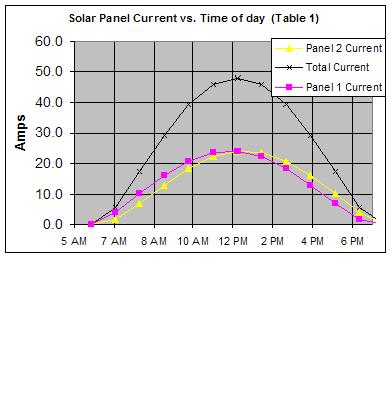markdem
Member level 3
solar panel wattage
Hi All, I have a quick question about solar panels. When the specs say that the panel will generate 1000w at 12v, does that mean that it can supply 83 amps (1000watts/12volts)?
Also, how can i then workout how many watts i will have after I will have after the inverter to change it to 240VAC?
Thanks, Mark
Hi All, I have a quick question about solar panels. When the specs say that the panel will generate 1000w at 12v, does that mean that it can supply 83 amps (1000watts/12volts)?
Also, how can i then workout how many watts i will have after I will have after the inverter to change it to 240VAC?
Thanks, Mark
